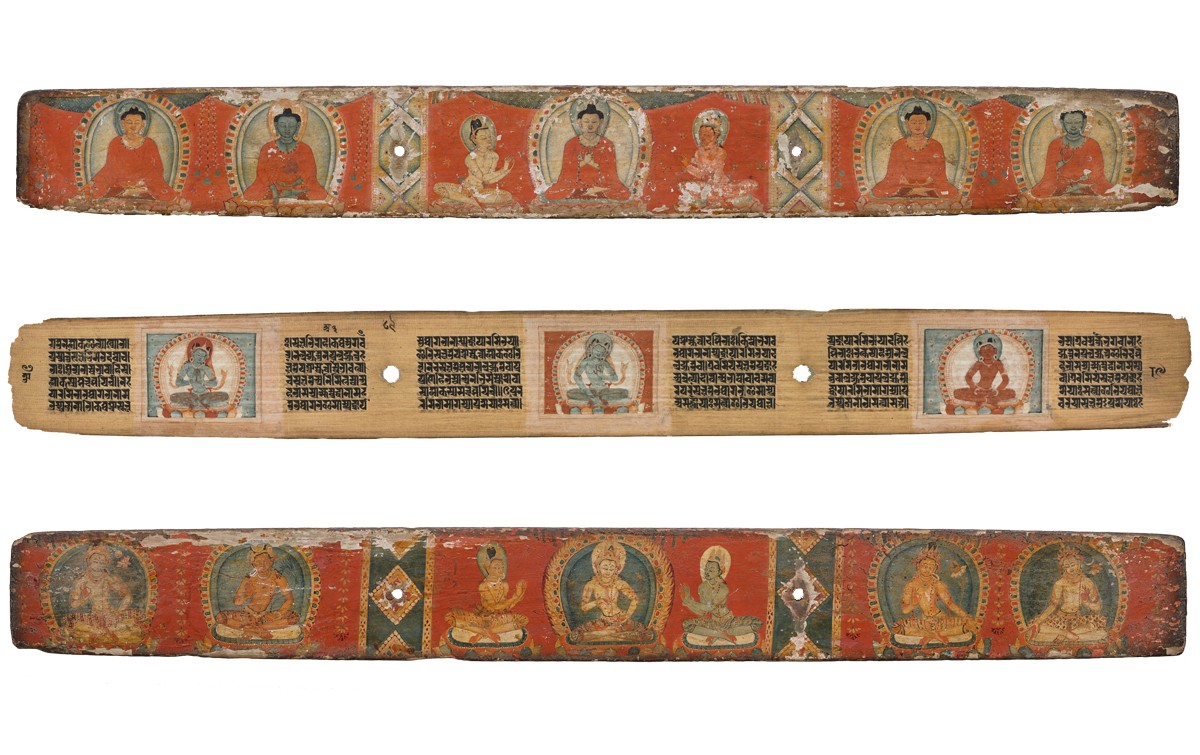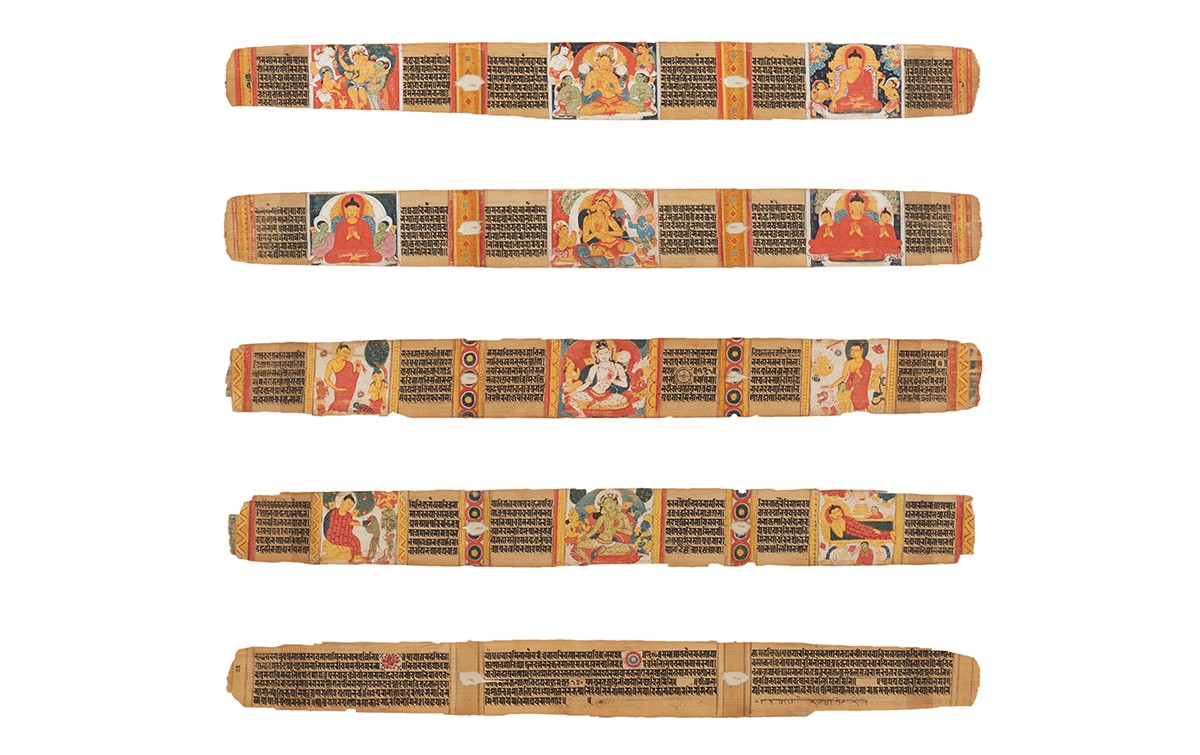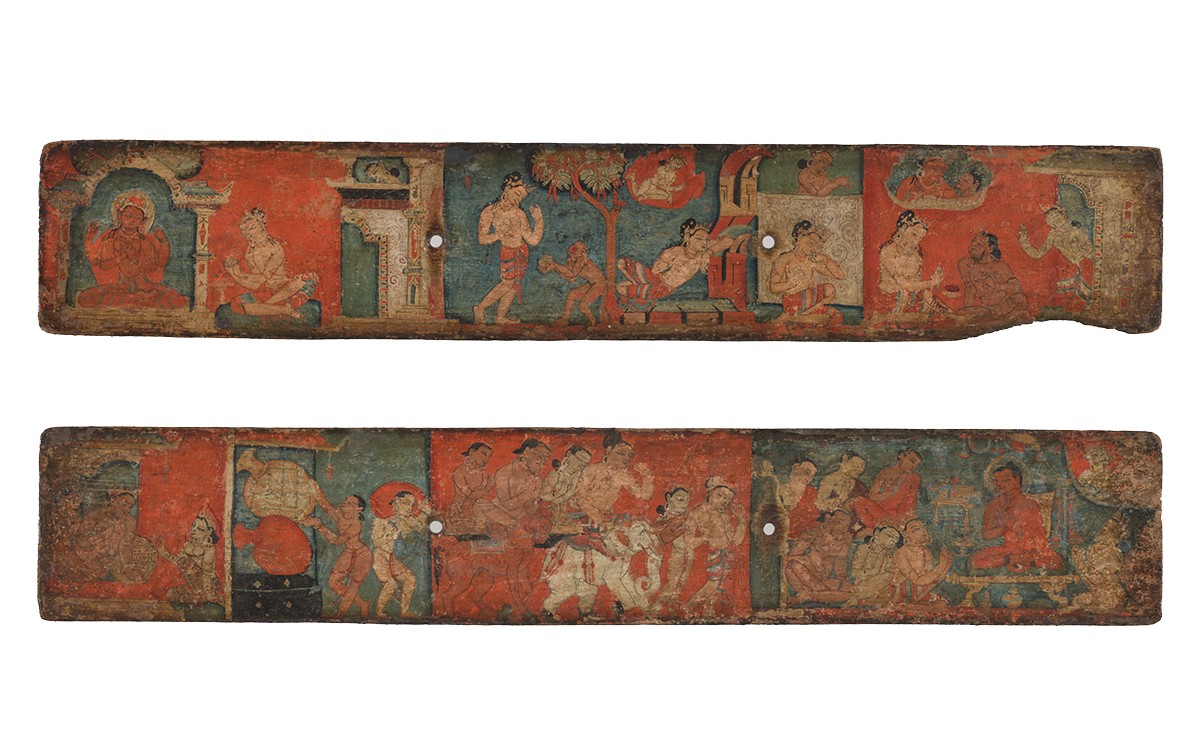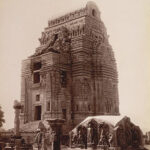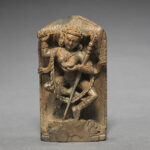The First Manuscripts Are Illustrated in Eastern India
800–900 CE
Some of the earliest modes of religious and literary transmission in early medieval India, illustrated, bound palm-leaf manuscripts are painted in present-day Bengal and Bihar between the ninth and thirteenth centuries. Beginning during the reign of the Pala dynasty, they illustrate various forms of Buddhist iconography. From episodes of the Jataka Tales to manuscripts such as Ashtasahasrika Prajnaparamita, the presence of Buddhist manuscript painting suggests the proliferation of Buddhism from sites such as Nalanda and Kurkihar (in present-day Bihar) into courtly, aristocratic and diplomatic settings. The iconography conforms to the plasticity and style found in Pala-era bronzes. Painted manuscripts rendered in the Pala style are also disseminated to other centres of Buddhism, including present-day Burma, Nepal, Tibet and Thailand, possibly through the movement of missionaries and trade through the established links between the Pala empire and Southeast Asia, particularly the Srivijaya confederacy.
Bibliography
Behrendt, Kurt. Tibet and India: Buddhist Traditions and Transformations. New York: The Metropolitan Museum of Art, 2014.
Guy, John, and Jorrit Britschgi. Wonder of the Age: Master Painters of India 1100–1900. New York: The Metropolitan Museum of Art, 2011.
Kim, Jinah. Receptacle of the Sacred: Illustrated Manuscripts and the Buddhist Book Cult in South Asia. Berkeley: University of California Press, 2013.
Feedback 
This entry appears in
Art in South Asia
Visit Timeline
Associated Timeline Events
First Published: March 11, 2024
Last Updated: August 5, 2024



